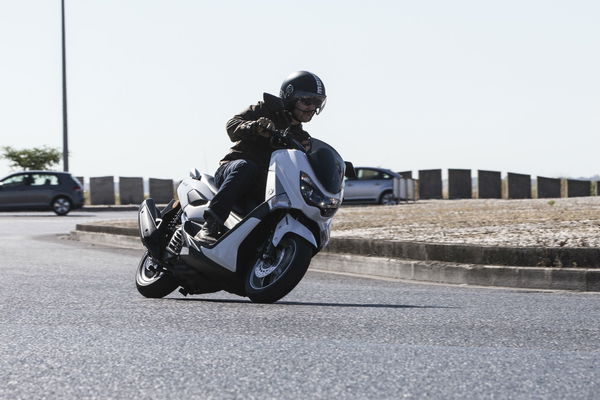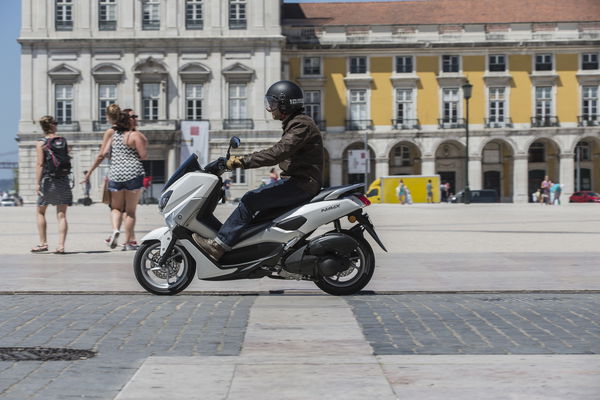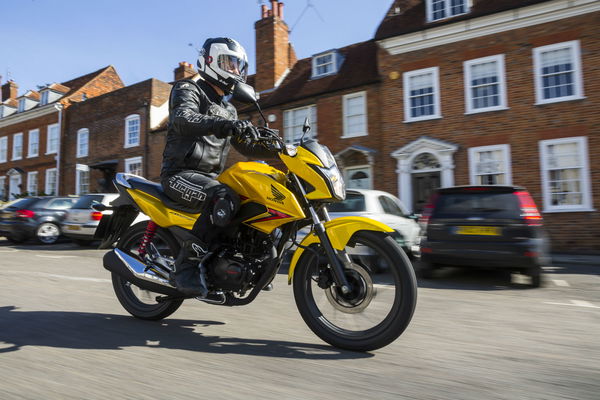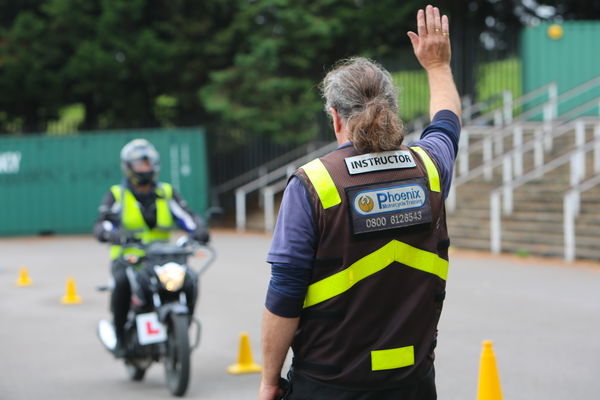First ride: Yamaha NMAX 125 review
Watch out, PCX 125. The NMAX is coming for you.


USUALLY bike makers can't tell us about a new model without saying things like 'spirit' or 'emotion' or 'intense aura of greatness'. Things you might call meaningless.
Yamaha's presentation on the NMAX 125 was less equivocal. Speaking to journalists at the launch in Lisbon, the firm said the scooter aimed to be better and cheaper than Honda's PCX 125. No need for intense auras with plain-talking like that.
The firm has good reason to target the PCX so directly and transparently: the Honda is consistently the UK’s best-selling powered-two-wheeler and one of the best-sellers in Europe.
In just as straight-forward terms, Yamaha told us the NMAX had a higher top speed and accelerated more quickly, putting it two-and-a-half scooter lengths in front of a PCX over a distance of 200m.
They said it was more powerful and lighter. It makes 12hp from its all-new 125cc liquid-cooled single-cylinder and weighs 127kg wet, compared to the Honda’s claimed 11.5hp and 130kg.
They said it had a better spread of torque. They told us the price: £2,671 compared to the PCX’s £2,699. And they said the NMAX has ABS as standard, while the PCX doesn’t.
They did everything except wheel a PCX in and ceremoniously boot it over, which might have made a good antidote to all the numbers and charts.
Two features of the Indonesian-built NMAX may make it a real threat to the Honda’s best-seller. One is the standard ABS, a first on a 125 scooter according to Yamaha. It’s quite good ABS too.
Lisbon’s many cobbled roads would have been a trial for any ABS system and the NMAX’s acquitted itself well. Under deliberately excessive braking, the intervention was marked by vibration through the lever as the machine came to a rapid and controlled stop.
The front 230mm brake disc and single-pot caliper have the power to stop the NMAX quickly under two-finger pressure. If you’re really in a hurry you’ll want to use your whole hand.
The second feature that could help it take customers from Honda is its variable valve actuation, another first for a 125 scoot. The system changes valve timing at 6,000rpm, with the aim of maximising torque across the range.
Predictably, Yamaha had a chart showing how it makes more torque across most of the range than the PCX, and a higher peak. Interestingly, this doesn’t quite seem to match with Honda’s specs, which give the PCX a peak of 8.8lbft while Yamaha claims 8.6 for the NMAX.
The NMAX engine does immediately feel strong for a 125cc scooter. Twist-and-gos can often have a slightly delayed throttle response. From a standstill, they respond like they've got something else on. On the NMAX the response is more instantaneous. Give it an experimental twist and the translation to movement is quick and eager.
At about 40mph, there’s enough go left to overtake fairly confident, without needing a mile of clear road to complete the manoeuvre. The claimed top speed of 100kph (62mph) seems modest. The launch ride was mainly in the centre of Lisbon, with only a couple of brief runs on faster roads. I got to 100kph easily and saw 108kph (67mph) on the digital clock before having to shut-off for a turning.
The engine didn’t sound stressed and vibes were well contained but the handling at those higher speeds was on the flighty side. At 50mph, on a curving slip-lane, some bumps induced wobble in the bars, brief and tiny but enough to reveal the sensitivity of the whole chassis to any steering disturbance.

Generally, the non-adjustable suspension seemed adequate, not too hard or soft, with okay damping and enough travel. It’s everything you’d want 125cc scooter suspension to be.
It wasn’t shown in the best light by those cobbled and potholed city streets though. If Yamaha’s intention was to highlight the limitations of 13-inch wheels on a lightweight machine, this was the place to launch it. The small wheels took a sustained, violent pounding, and a good deal of it was transferred to the chassis and rider. I wasn’t uncomfortable, just perpetually braced for another good rattling. It wouldn’t have made leisurely activity for a pillion.
Of course most of us don’t spend our whole day riding on cobbles, and on better-surfaced roads the NMAX resumed a normal, satisfactory service. Yamaha wasn’t stretching definitions too far by calling it ‘sporty’. The centre-stand grounds only after a fairly good lean angle has been achieved, and grip from the Dunlop ScootSmart tyres seems good.
The NMAX feels very light. Park it with the front wheel pointing down a steep hill and facing the kerb if you like. It’s easy to paddle backward up a gradient from the seat, which, at 765mm, is low enough for quite short riders to get both feet flat on the ground.
The seat’s wide and long enough to shift around and there’s an exceptional amount of leg room in the foot-well. I’m 5’9” and was able to move back in the seat and stretch my legs, with my feet on a sloping section of the foot-boards. I’ve ridden maxi scooters that are more cramped.
Under the seat there’s space for a full-face helmet, turned upside down, and a bit more. I squeezed my jacket in there next to an open-face lid. Yamaha says it’s got more space than the PCX. It’s going to be very close - the PCX has space for a full-face and something else too.
There’s no closable glove box on the NMAX, unlike the PCX, but you do get a useful open cubby hole. The test bikes had a half-litre bottle of water in there, and I managed to also wedge in a camera.
There’s no real wind protection from the NMAX’s screen, although there’s also no great need for any at the speeds it’s capable of. The mirrors are smallish, especially for a machine squarely aimed at learners. You can see what’s behind you but it’s like looking at it through a very small window.
A taller screen is included in the accessory range, as is a rack and top box.
Yamaha claims 129mpg, 4.3mpg less than Honda claims of the PCX. The average fuel economy metre on the NMAX’s dash said 2.9 litres per 100km (97.4mpg) by the end of the ride. That means a range of 140 miles from the 6.6-litre tank.
The dash is a small, round digital display with warning lights dotted around it. It’s got a fuel gauge and a fuel economy bar, which goes up or down depending on how hard you’re riding. The latter seems a bit of an unnecessary gimmick considering it also tells you your precise current fuel consumption in numbers.
It shows your miles since an oil change and a service of the drive belt in the CVT transmission. Service intervals are 600 miles for the first and every 4,000 miles thereafter, with a belt change at 12,000 miles.
Part of the reason for the PCX’s sales dominance lies in the Honda badge and the high level of trust attached to it by motorcyclists and non-motorcyclists alike. Even ABS and variable valve timing may struggle to challenge that.
But there should be no doubt that the NMAX is a well-rounded, good-value, excellent scooter, that deserves to take sales from somewhere.
Model tested: Yamaha NMAX
Price: £2,671 on the road
Engine: 125cc single, liquid cooled
Power: 12hp
Torque: 18.6lbft
Wet weight: 127kg
Tank capacity: 6.6 litres
Fuel economy (according to dash): 97.4mpg
Seat height: 765mm
Colours: red, white, black, titanium
Available: by the end of this month
Watch our video review of the Yamaha NMAX 125











